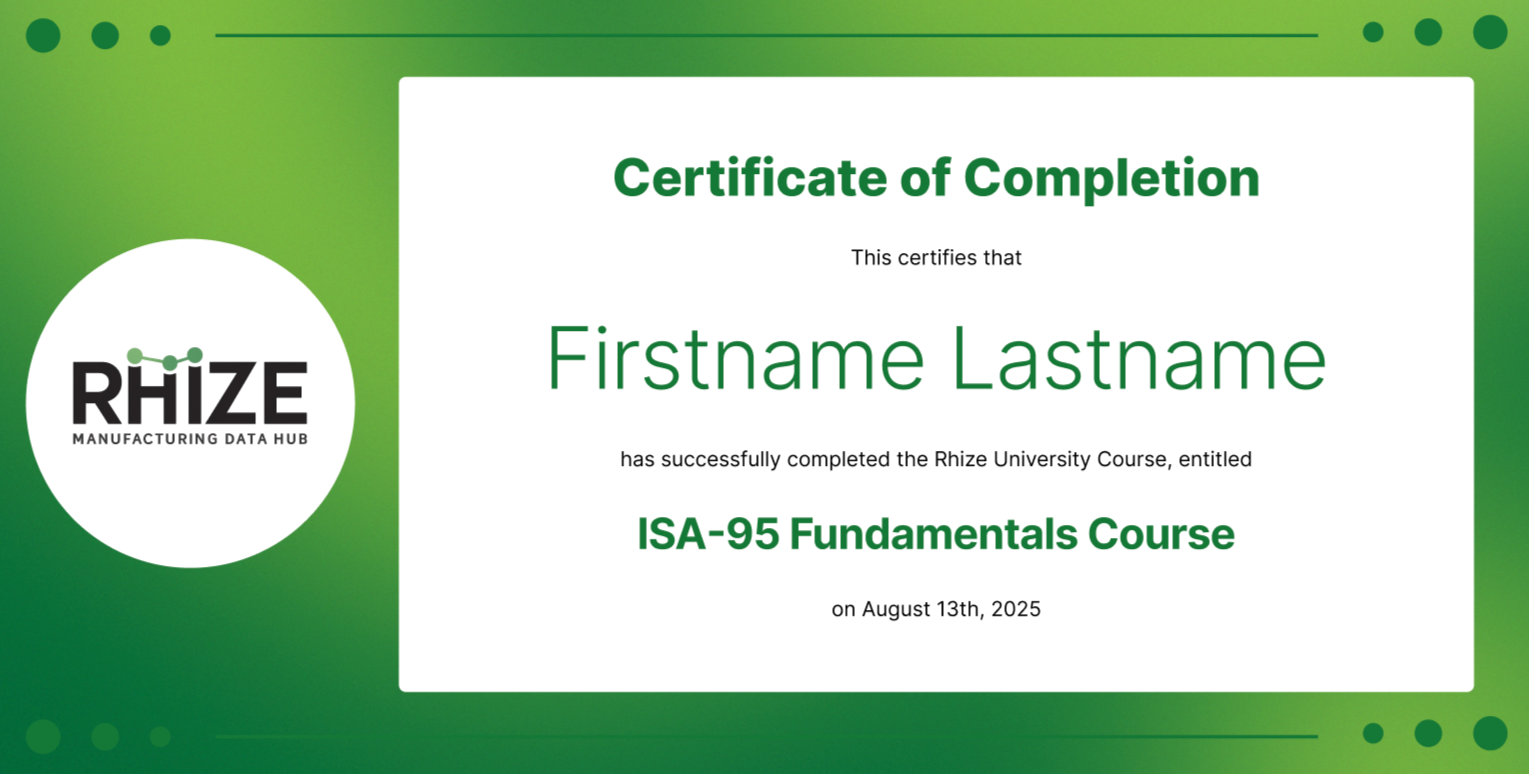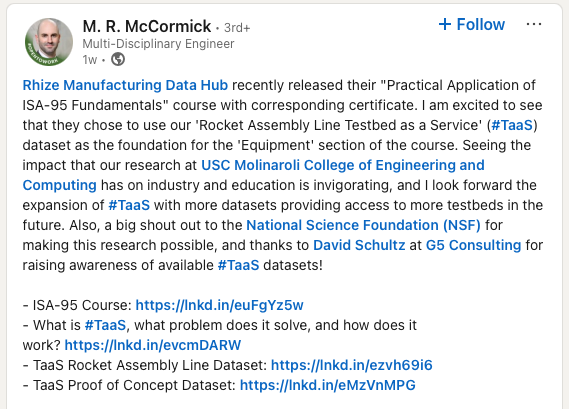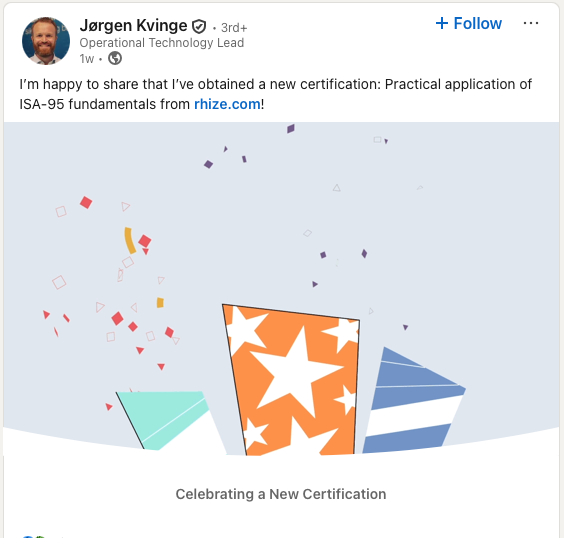ISA-95 Training
ISA-95 Training
A scenario-based eLearning series designed to help clients/learners build foundational ISA-95 models using real manufacturing data. Learners progress through hands-on exercises that guide them step by step, applying ISA-95 concepts in practical, real-world scenarios.
Audience: Current/Potential Application Clients, production/manufacturing engineers, contracting firms, current/new employees
Responsibilities: Instructional Design, eLearning Development, Visual Design, LMS Administrator, Technical Writing
Tools Used: Articulate 360 Suite, Figma, Slack, Google Suite, WorkRamp LMS, Trello, Canva, Adobe Suite, Hypothesis, Notion
The Problem
A Lack of Industry Knowledge was Stifling Our Growth
Clients were skeptical of the ISA-95 standard, viewing it as too complex. This knowledge gap made it incredibly difficult to sell the product built on that framework, and was a direct roadblock to the sales efforts.
Client Onboarding was Too Resource-Intensive
Client onboarding was a heavy burden, consuming enormous time and resources. This was due to clients' workforces not being familiar with ISA-95, which forced the company to provide extensive implementation support. The inefficient and expensive process was unsustainable for growth and a major barrier to scaling business operations.
Company Couldn't Compete on Two Fronts at Once
A major market gap existed with no comprehensive ISA-95 training programs available. This meant clients had nowhere to turn for a foundational understanding of the standard, forcing the company to act as both a software and training provider. This diverted focus and resources away from innovating and improving the core product.
The Solution
Foundational Training for Clients
A scenario-based training course teaches clients and potential clients the practical skill of building foundational ISA-95 models, which is critical for implementing the product. This enables clients to be self-sufficient, drastically reducing onboarding resources and allowing the company to scale.
Building Expertise with Advanced Courses
Advanced courses provide hands-on training for complex model-building, helping clients move to full-scale integration. This creates a community of knowledgeable users and solidifies success with the product.
Equipping The Sales and Marketing Teams
To overcome industry skepticism, a dedicated course for sales and marketing teams will be created. This training will equip them with the arguments needed to sell the tangible value of the ISA-95 standard, transforming its perceived complexity into a powerful sales advantage.
Supporting Resources and Vocabulary
Supplementary resources will be developed for quick reference on key vocabulary and concepts. This tiered approach simplifies the complex, 100+ page ISA-95 standard by providing a structured learning path. This ensures client success and establishes the company as a market leader.
My Process
Rather than using ADDIE, I applied the SAM model due to the short timeline, urgent client needs, and frequent SME disagreements. The iterative approach allowed us to move forward quickly while refining content continuously.
In the preparation phase, I gathered input from ISA-95 SMEs and client success managers. Using Slack as our communication hub, we identified that clients struggled most with building foundational ISA-95 models, slowing implementation and consuming onboarding resources.
During iterative design, I worked with SMEs to create and refine an evolving action map of critical skills. Because priorities often shifted, I developed flexible drafts that could be adapted after each review. For storyboarding, I used Google Slides to outline lessons and modeling tasks, then built supporting graphics in Figma and refined them in Adobe Illustrator for professional polish and reuse.
The core of the training was hands-on practice: learners built ISA-95 models using real manufacturing data, moving from theory to application to ensure immediate relevance.
Finally, I deployed the course in WorkRamp LMS. Although SME reviews were still ongoing and sometimes delayed, I was instructed to launch and promote the course. WorkRamp’s flexibility allowed me to publish quickly and then apply iterative updates based on both client feedback and SME input.
As part of the rollout, we launched an ISA-95 certification program starting with foundational model-building skills. The certification will grow over time with advanced modules for complex model construction and full-scale integration—providing clients with both validated expertise and a clear learning pathway.
Takeaways
Storyboarding and designing the courses were critical to its success, but the project required constant flexibility. At one point I had to halt development and redesign major portions or the courses due to SME collaboration and consensus. I would say that the most challenging part of the developing the courses would be working with SME’s located in different parts of the world. It was difficult to schedule actual huddles in Slack, so most of our dialogue was done in a company wide thread where everyone could contribute and offer up their expertise when available.
The shift of also selling the course to the public made me a part of the marketing team and an LMS administrator. We chose to allow some industry leaders to experience the course before release to receive feedback and exposure. Finally releasing the initial courses proved that we have developed a workflow that will make the development of the future courses and materials be optimized.




